
We were in Sigulda one day, this course is very small, because in Sigulda and the vicinity of the city really is, what to see and where to go. Sigulda is located in Housecom national Park, which involves three of the walking route, following each of which it is possible not only to find solitude and enjoy the wildlife, but also see a lot of monuments of history and architecture. To go through all the trails and seeing all the beauty of Gauja, it is best to come to Sigulda at least two, and preferably three days.
But one day we visited the city with all its sights, parks and gardens, palaces and castles. Details about the walk in Sigulda we described in a previous article, see here.
As soon as we arrived in town, immediately went to the tourist information centre where free took the map with all sights and Hiking trails, and also received great free advice where is best to go and what to see. After the consultation, then pokumekav 5-10 minutes, we decided, since we do not have time to get around all the routes, planned his day in the following way, the first thing I decided to explore the town itself, and then to walk along the longest route and the beautiful Gauja national Park with its cable car, Gutmana cave and Turaidas Museum-reserve with its famous Turaida castle. If anyone is interested, the tourist information centre is located on the forecourt in the building of the railway station.
Sigulda, a small town, quite beautiful, quiet and cozy. We walked it all in about an hour. Then went to the cable car, the beginning of the Hiking route is long 5-five kilometers.
Near the cable car is a few souvenir shops
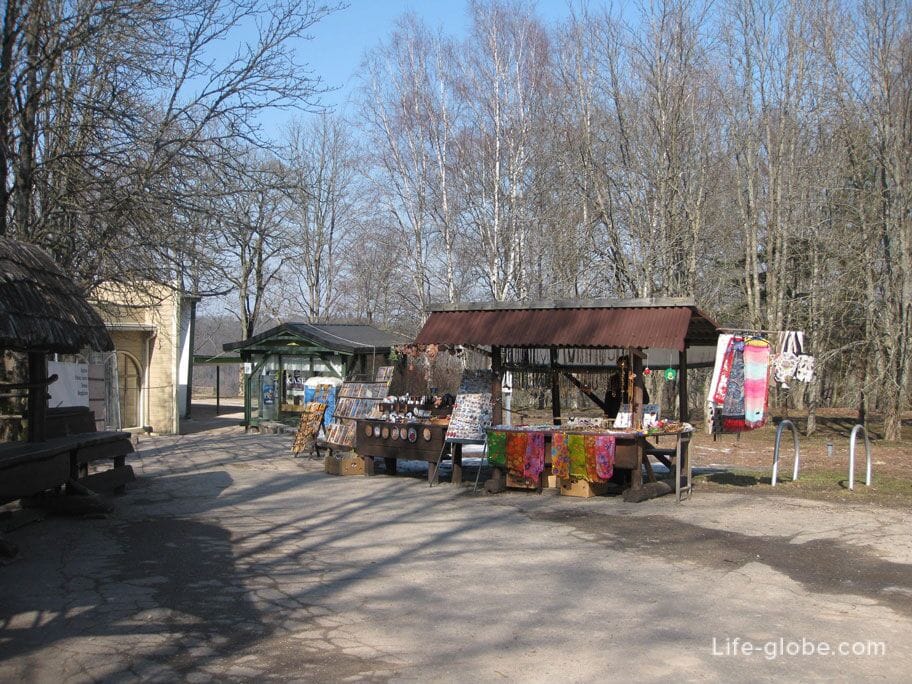
Cable car in Sigulda this aerial cable way across the river Gauja, which connects two hills in Sigulda and Krimulda. Rope length 1020 metres at a height of 40 to 43 meters above the river.
It turned out that the cable car to the trailer only one and recovering it every half hour. We came to the time when the van took only a few minutes ago. To wait another half an hour we wanted, because we made a couple of shots of a cable car and walked on the bridge over the river Gauja.
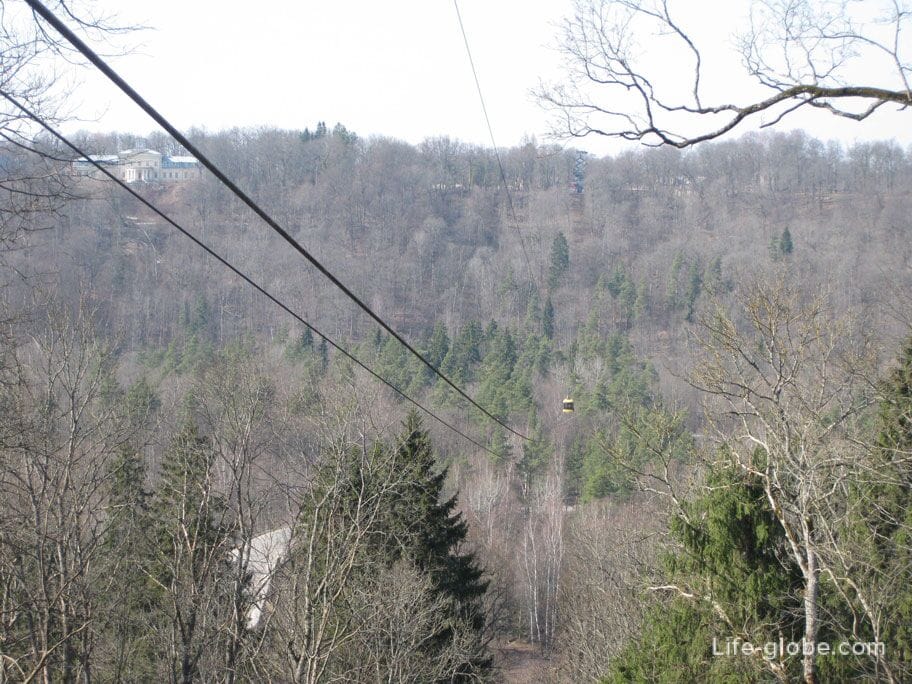
Cableway to pay the cost of an adult ticket one way 7 Euro, children 5 Euro. The fare there and back, ticket adult 12€, children: 8. If you want to stroll through the Park grounds and visit the Turaida Museum-reserve, then buy a return ticket do not recommend, then you will understand why.
Thrill seekers in the summer can test yourself in the jump on the top of the cable cars. A single jump costs 60 Euros, in tandem - 105. Prices for the cable car and bungy jumping are subject to change, please check before you travel, on the official website. The site is listed at the end of the article in the useful information.
There are two ways to cross the river Gauja, you can go to the cable car and you can go down to the river and cross it on foot across the bridge.
Here we go with Sigulda hill. The descent is equipped with comfortable wooden steps. Generally, along the route in places where the climbs, descents or inconvenient paths such wood decks.
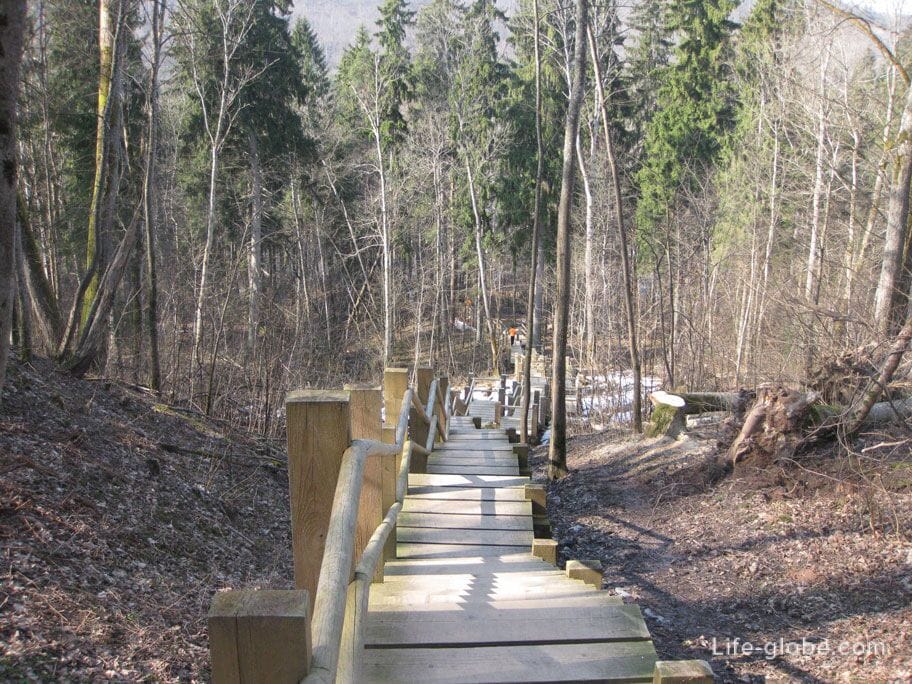
Went to the river Gauja. Such a narrow rivulet
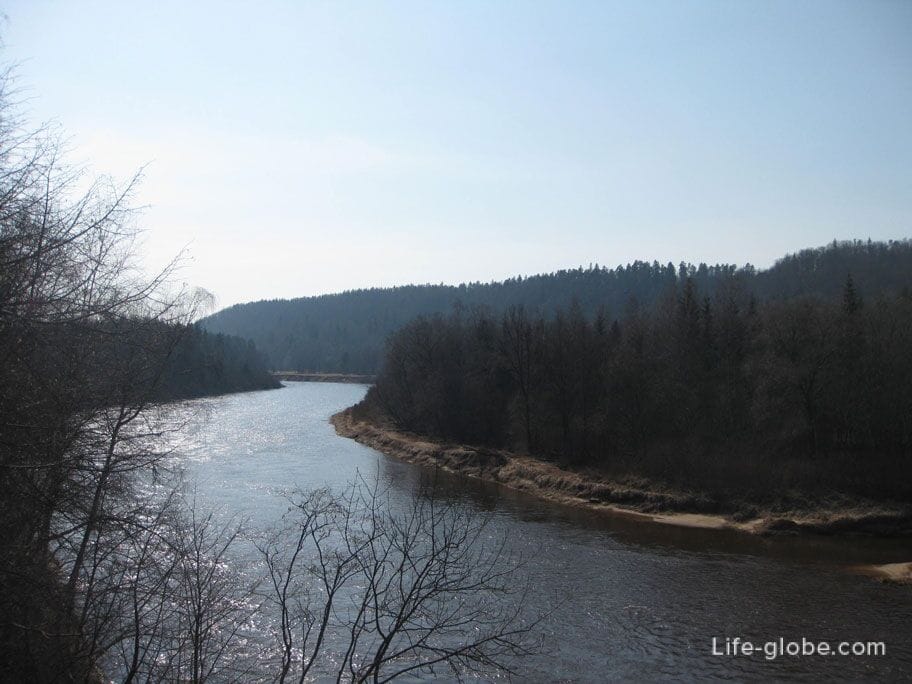
The bridge through the river Gauja
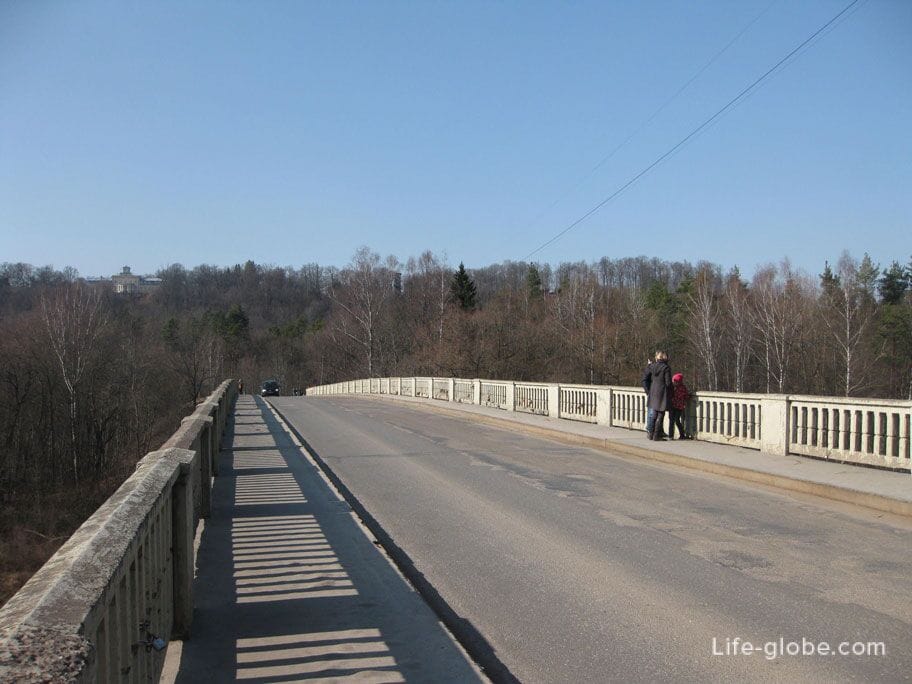
After the bridge we find ourselves in the pristine nature of the Gauja National Park. Sigulda is also paired, but the unspoilt nature and all its magnificence can be seen only deep in the Park. The South-Eastern part of the Park, a popular place of recreation for residents of the city of Riga and the North-Western part largely conservation area.
Gowicki national Park is the largest, the first and oldest national Park in Latvia, founded in 1973. The Park is located on the territory of 11 edges and covers an area of 91 745 hectares, the main part is in the valley of the river Gauja. This is the place Park filled with a variety of natural and historical monuments. We went to see.
Continuing your way, go we so enjoy nature and the silence around and only the birds are singing
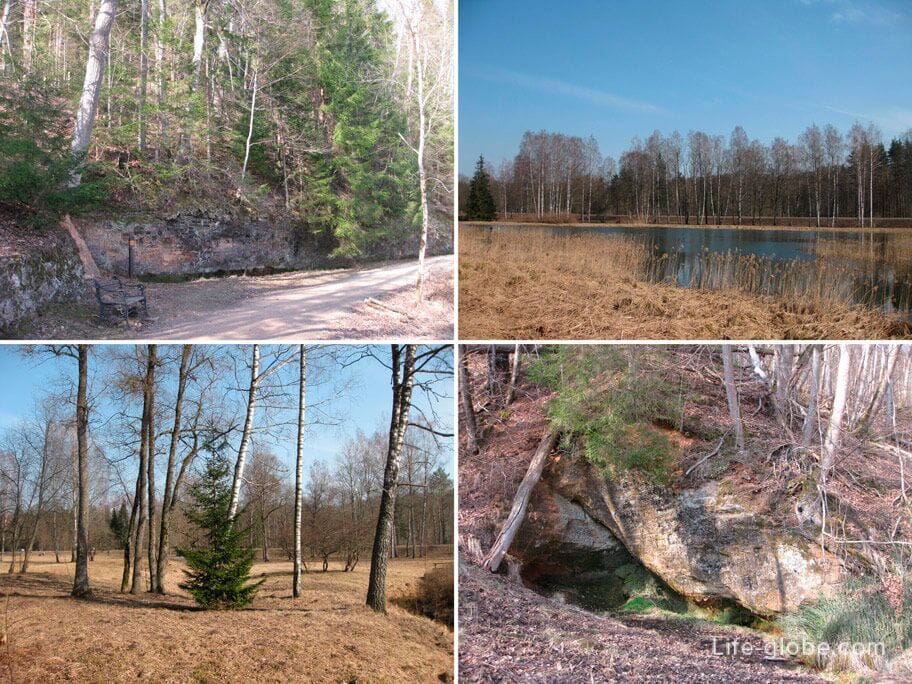
A tiny waterfall
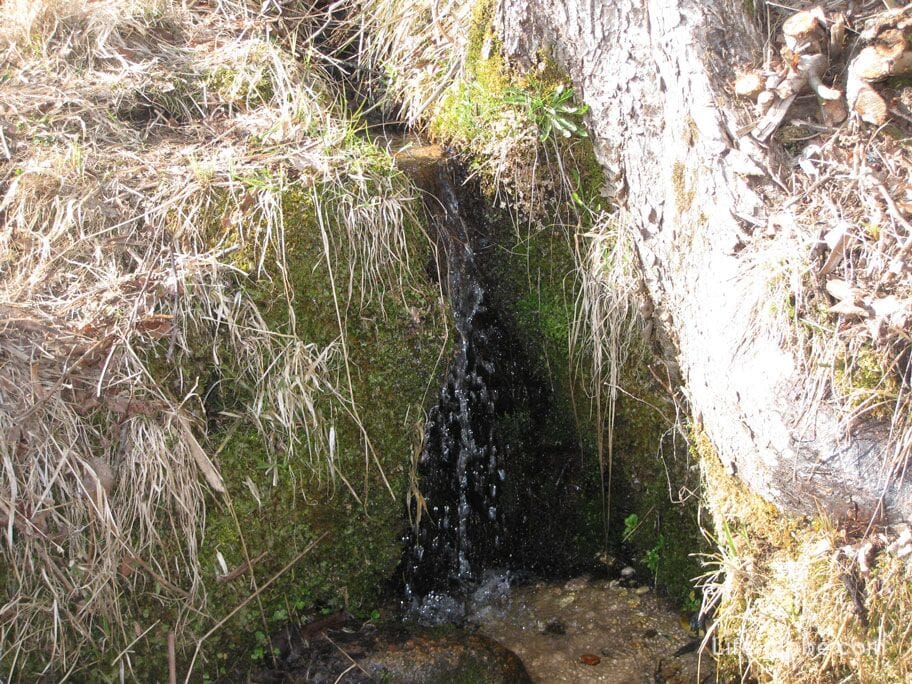
We were in Latvia at the end of March - beginning of April, because in the lowlands was still snow, but on the Sunny sides of slopes were already in bloom flowers
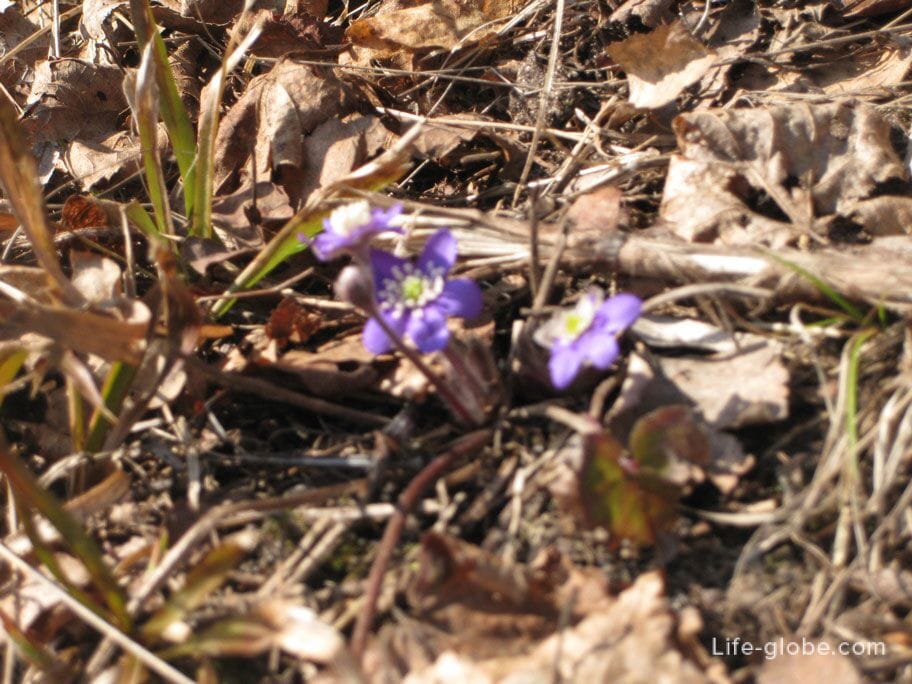
Refined paths met other tourists
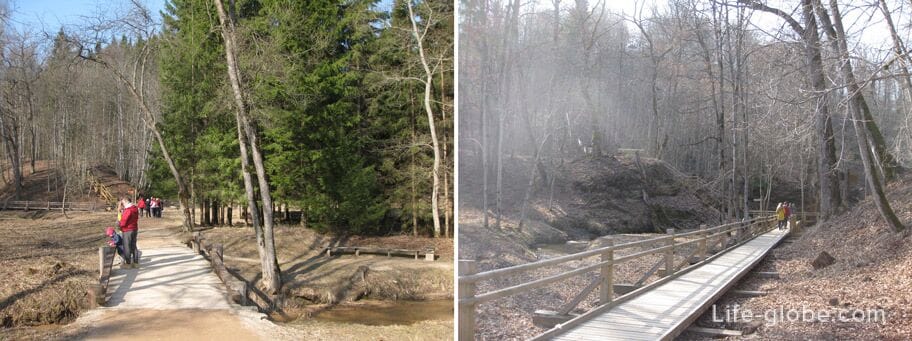
If you go to the cable car from Chodskeho of the hill you will come to the Krimulda hill, and there you can visit a few historical sites Krimulda manor, the ruins of Krimulda medieval castle and stroll along the Krimulda manor Park. If across a river to walk, then these two objects will need to rise. This time we get to the manor and castle go, the time is not enough, and was too lazy, next time we go. And it's no wonder did not, why, describe below.
Krimulda manor photographed from the other side of the river from the cable car
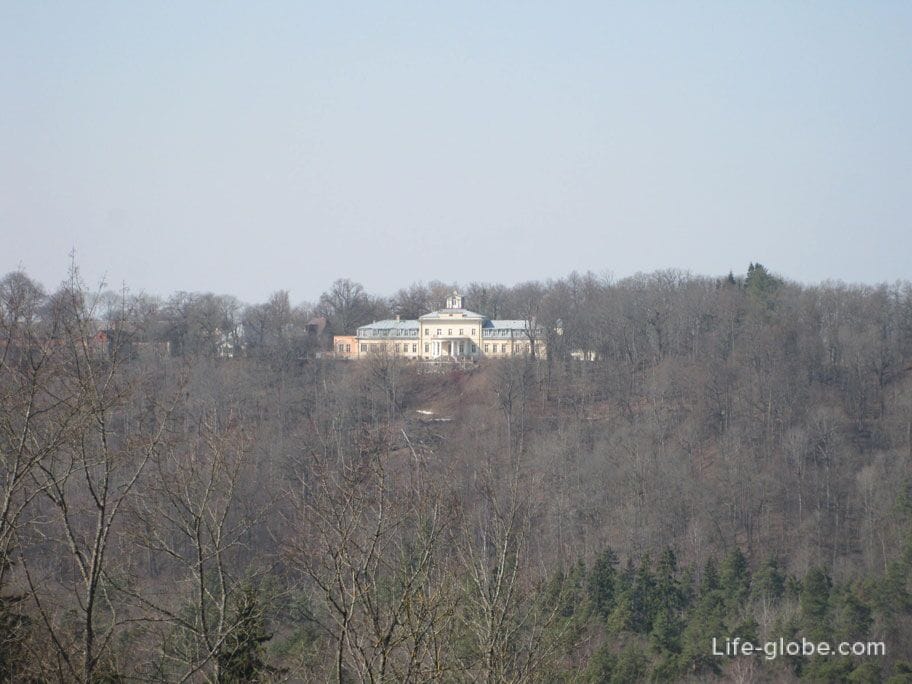
Park Gauja famous by Gutman's cave (Gutmaņa ala). Here we are, having read, as always on the Internet about precrash cave went to Sigulda in anticipation to see this miracle of nature. We love different mountains, cliffs and caves.
We go so we are pleased with the signs of eating here that's approaching a beautiful cave. Came... and then... honestly I just do not even realize that we already came to the cave, and look were all looking for the next pointer to move on. But no, it was the same Gutmana cave. From the cave, in the usual concept, there is a big joke. It's not the cave legendary and beautiful Kungur Ice cave in Perm Krai or in Most Azishskaya in Krasnodar Krai, but still a cave. In General, look for yourself.
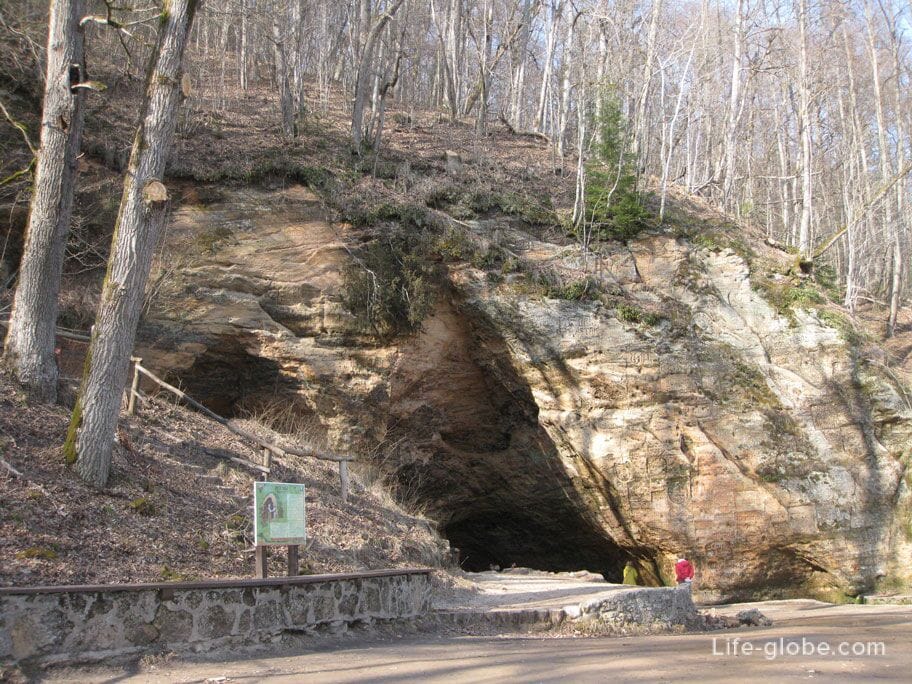
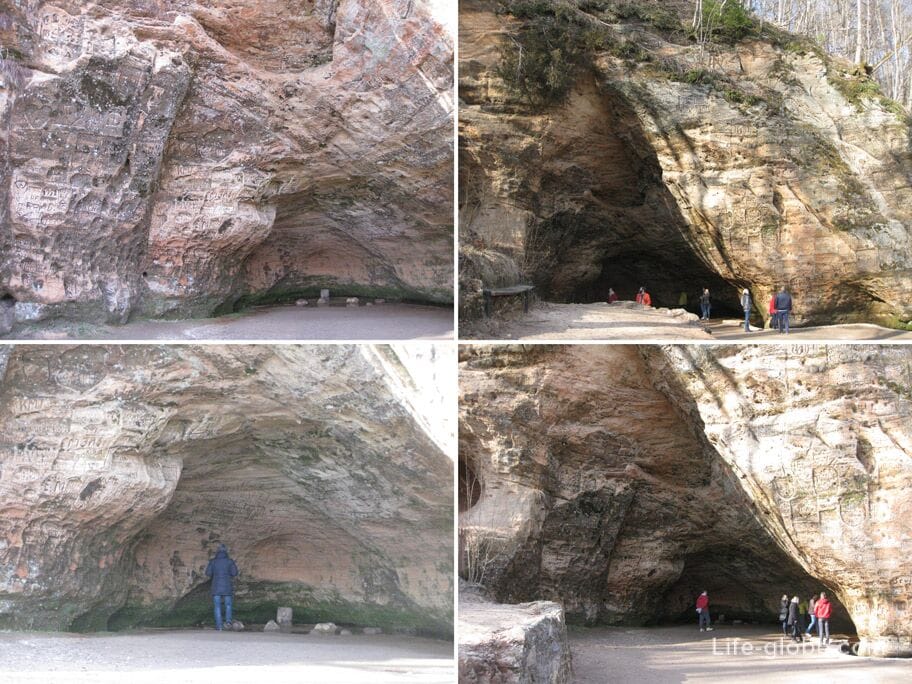
Gutman's cave is a small recess in the cliff of Devonian Sandstone. In General, the whole Park of Gauja is best known for the cliffs of Devonian Sandstone. It is in the area of Sigulda the height of these cliffs up to 90 metres.
Despite the relatively small size and unimpressive appearance, Gutmana cave, the biggest cave in the Baltics, which is a vintage historical object, whose walls witnessed many historical events and preserve inscriptions, ranging from the 17th century.

In the center of the cave flows a source. They say that this source is able to cure diseases. Once it was used to treat people one healer, which is popularly called "gut mann". In his honor, and named the cave.
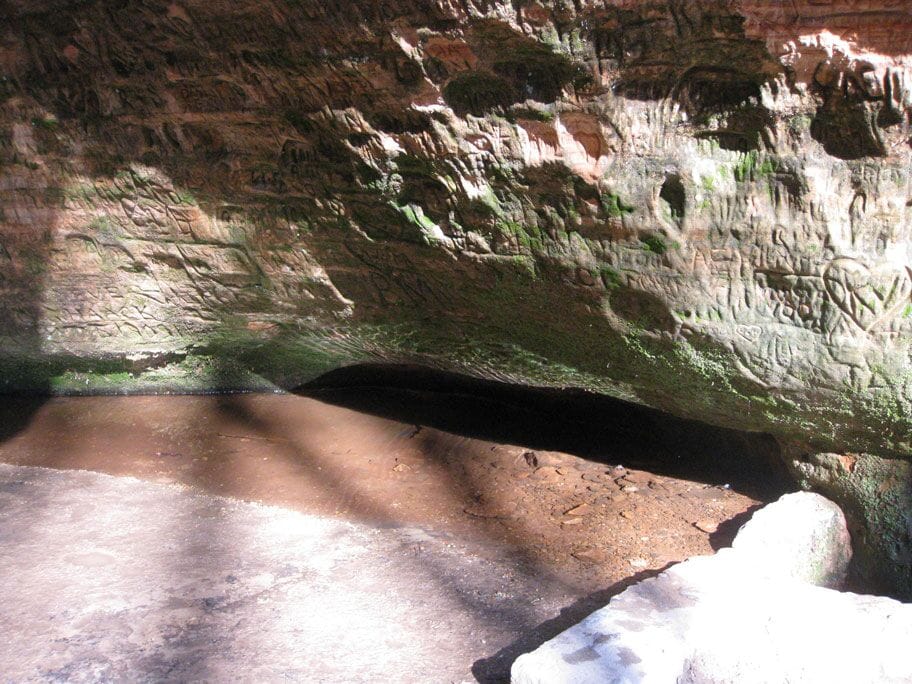
Here was born the most beautiful and well-known Latvian legend of the rose of Turaida, which is near the cave secretly met with her lover. This legend is quite long, touching and full of romance, so we'll tell about it in the next article, read here.
The purpose of the preservation and protection of rock cave and many other rocks from the Devonian Sandstone, a few decades ago served as a Foundation for the Gauja national Park.
On the left Gutmana cave is another small recess in the cliff. About the cave-niche, a lot of legends, one of which is associated with the Turaida rose, but more on that in the aforementioned article about rose. According to reliable information guides this niche dug soldiers hiding from enemies in the forests of Latvia.
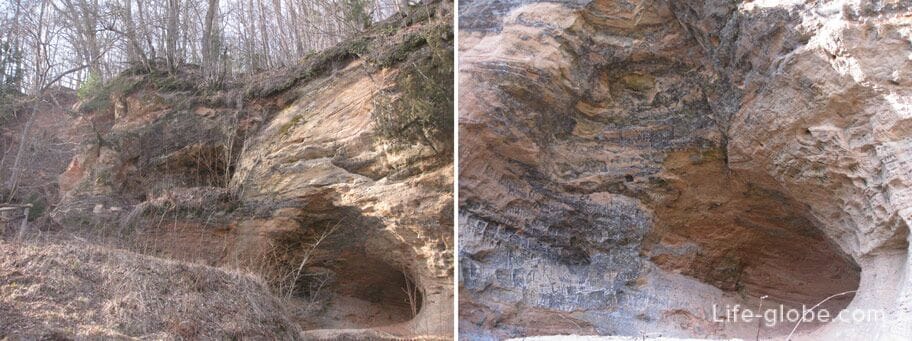
Near the Gutmana cave sanitized clearing, where the lake and equipped place to stay
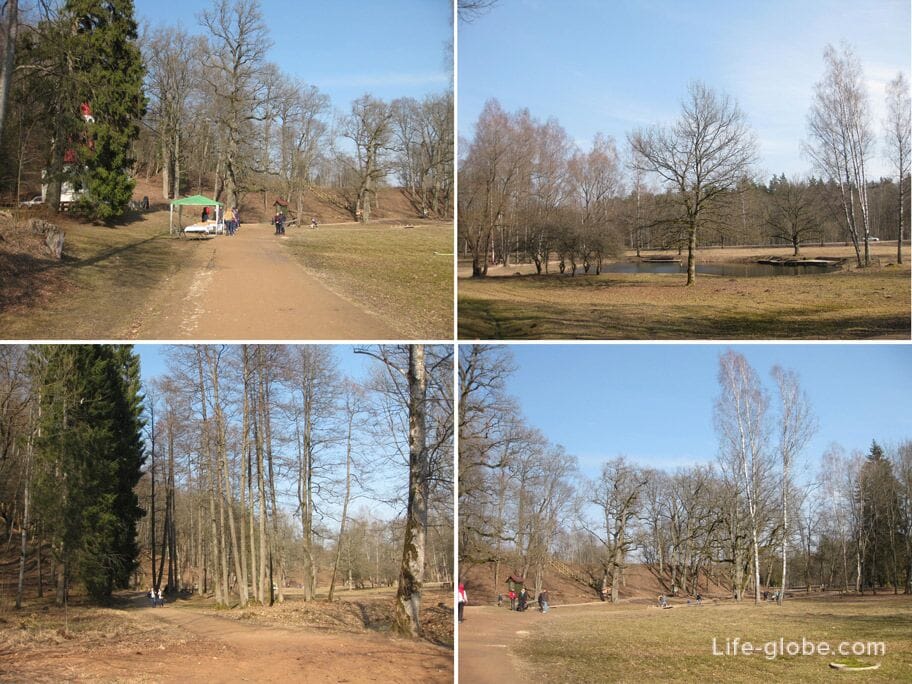
There is also a small point of a public cateringwhere you can eat cakes, sweet rolls and coffee. From the station square in Riga to this place to buy food or at least water anywhere. People taking food and water from the city, we in advance did not care to point until I reached the cave pretty hungry. But even the wild hunger made these nut and coffee taste better, but we hunger satiated, paying for 4 of pie, one sweet tube and two coffee a little more than five euros.
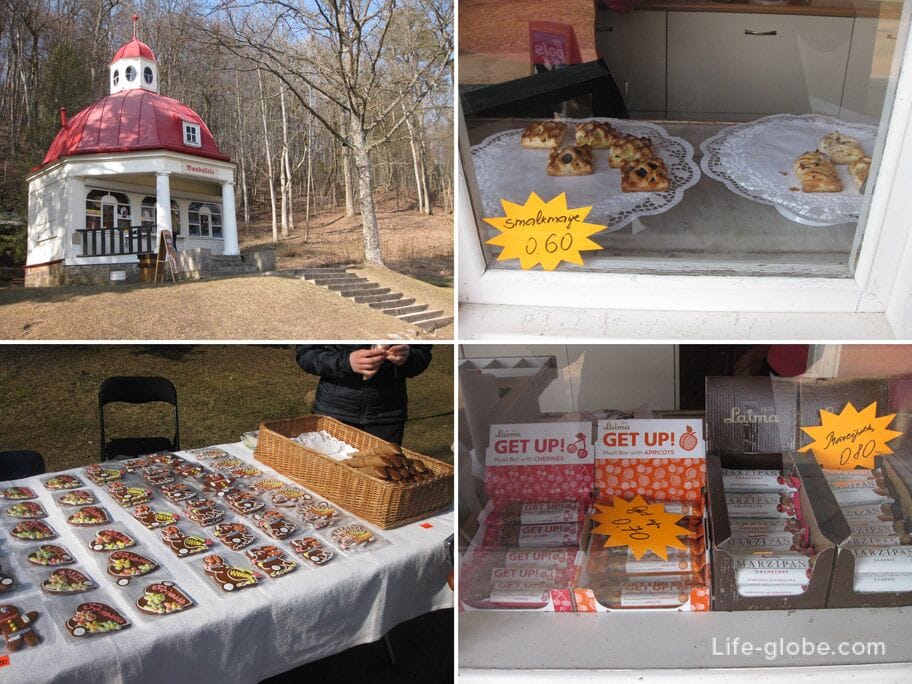
Through some 200 meters from the diner across the street is a small roadside cafe, where for 5 Euros you can take a portion of kebab with vegetables and French fries, but who knew.

Snack, we went on a walk through the Gauja National Park, heading to the most visited Museum in Latvia - Turaida Museum-reserve.
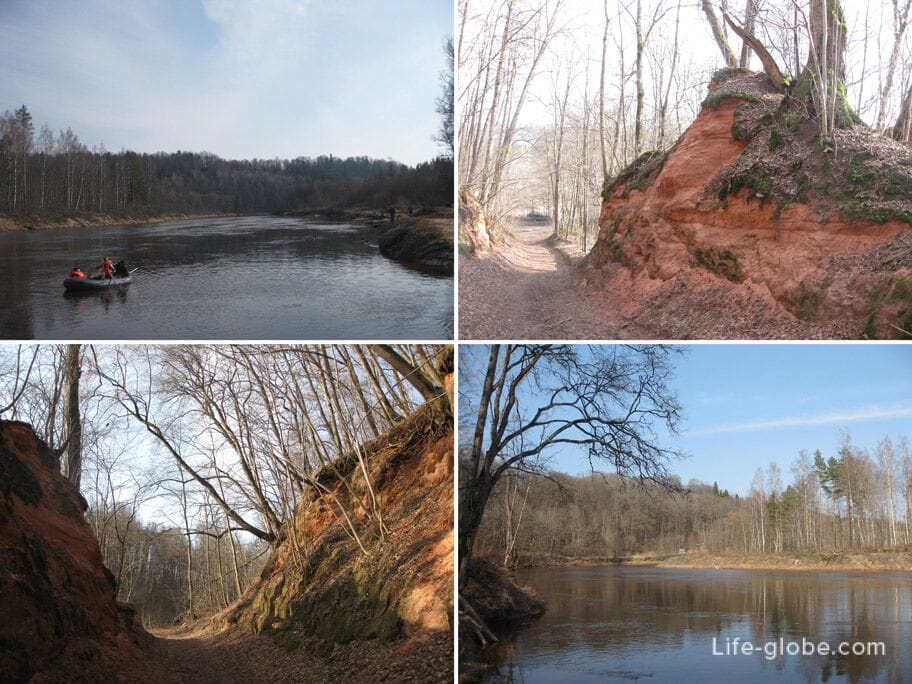
In Sigulda we arrived early in the morning, and went to the main purpose of all the way, Turaida Museum-reserve, about five o'clock in the evening. All the way from Sigulda to the Museum took almost the whole day and 5 kilometers.
Turaida Museum reserve (Turaidas muzejrezervats) was established in Turaida historical centre on the basis of the Sigulda local history Museum. Once on the site of the Museum was located in one of the most ancient state formations in Latvia - Turaida.
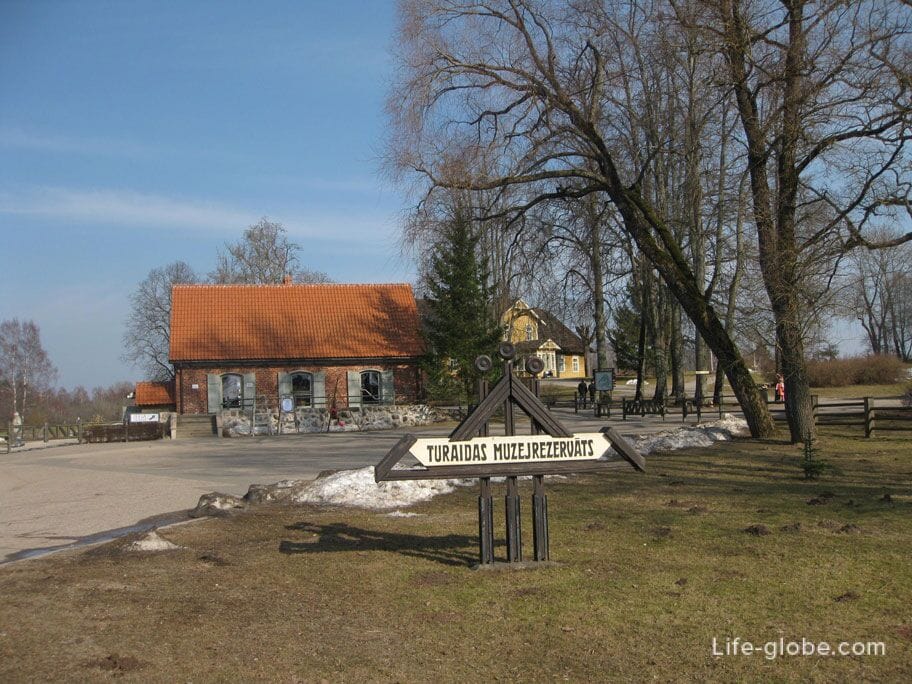
Currently, the Turaida Museum reserve is a fenced area in 43.63 hectares, 38 of which are of Museum exhibitions, together forming the complex of monuments of culture, archaeology, architecture, history and art, telling about the events that took place in the area since the 11th century. Of the most famous attractions of the Museum is possible to distinguish Turaida stone castle, Park songs, Church mountain Lutheran Church and Turaida manor. In Skopje the Museum-reserve is a etnoturistic complex. For example, the Turaida Museum reserve can be compared with the Cossack village of Ataman, which in the Krasnodar region.
It was a small digression for reference. And now back to our walk. Went we entered the main gate of the Turaida Museum reserve. Here cash, adult ticket costs 3 Euros. The Museum is large, and the fence fencing it is purely symbolic, low and serious loss, sometimes no, so go to the main entrance, you can go to the Museum and free.
It turns out the main exhibitions of the Museum, Turaida stone castle and the Lutheran Church has its opening hours. And in the winter these facilities are open until 17:00 hours. Opening hours and ticket prices are subject to change, please check before attending, all information can be found on the official website of the Turaida Museum reserve (the website address is listed at the end of the article in useful tips). We barely barely made it. That's why the decision not to go to the Krimulda manor and castle were correct, otherwise we wouldn't have got to its main goal.
When we bought the tickets was twenty-five, and as we explained to the girl selling tickets, we need to hurry and go first to Church and then to the castle, to examine them, and after walking around the Museum as your heart desires. And so we did. Also was a plus that did not succumb so sweetly alluring freebies to pass on the reserve for free, but would walk and understand that but where is missed so much precious time.
Came to the mountain of Turaida Church and the Lutheran Church (Turaidas Evangtliski Luteriska baznica). A small wooden Church with a red tiled roof and white cupola topped with a grey dome with a Cockerel on the spire.
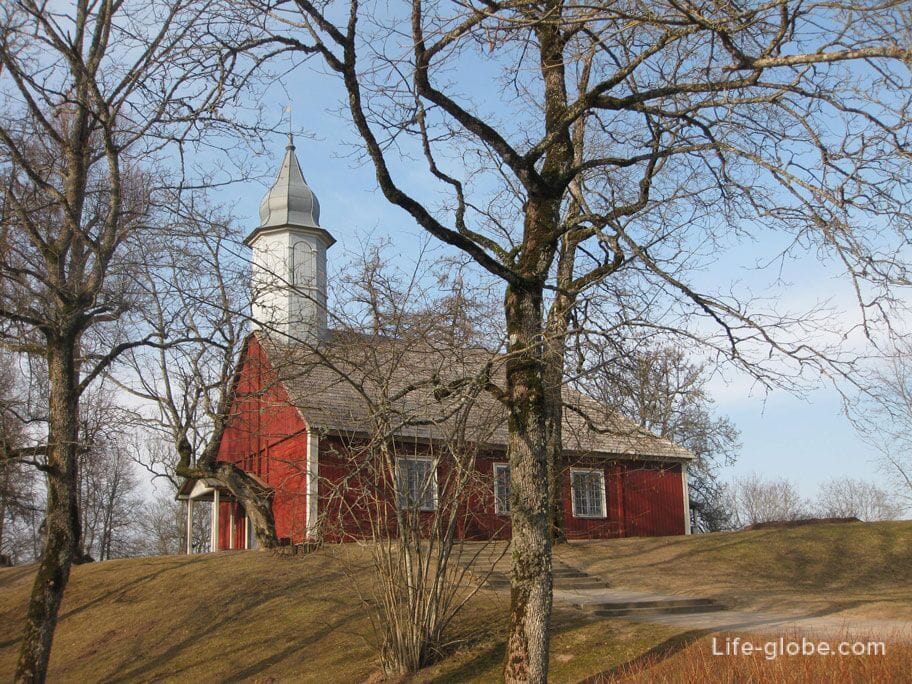
Turaida Church hill - the old place the building of churches. Archaeological studies indicate that this place was once at least two churches and a cemetery. Currently, this place is built Turaida Lutheran Church. This Church was consecrated in 1750 and is one of the oldest wooden churches in Latvia, which without special alterations remained at their initial construction.

The interior of the Church is very modest, made in soft pastel colours. This situation is part of the sacred cultural heritage of Latvia is characteristic of rural Evangelical Lutheran churches in Vidzeme 18th century. Do the Lutherans that the Catholic Protestants fighting against the exactions and abuses of the Roman Catholic Church. Lutherans advocated simplicity and accessibility, which is why in all Lutheran churches is simple and understated interior, without expensive decoration and artsy lines.
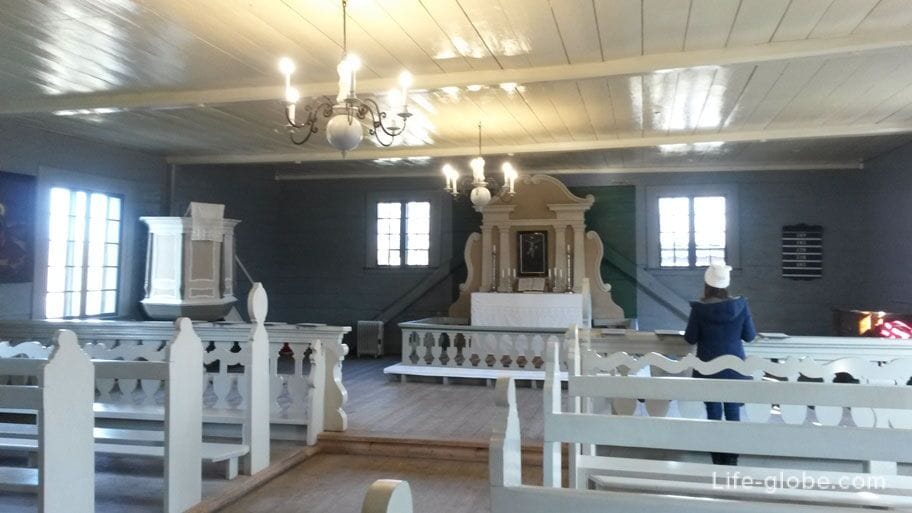
The altar Turaida Lutheran Church carved into the wall of the building. In the center of the altar is the altar painting "Golfer" unknown author created in the late 17th - early 18th centuries and is an outstanding masterpiece of its time. On the altar you can see the antique candlesticks and the altar Bible.
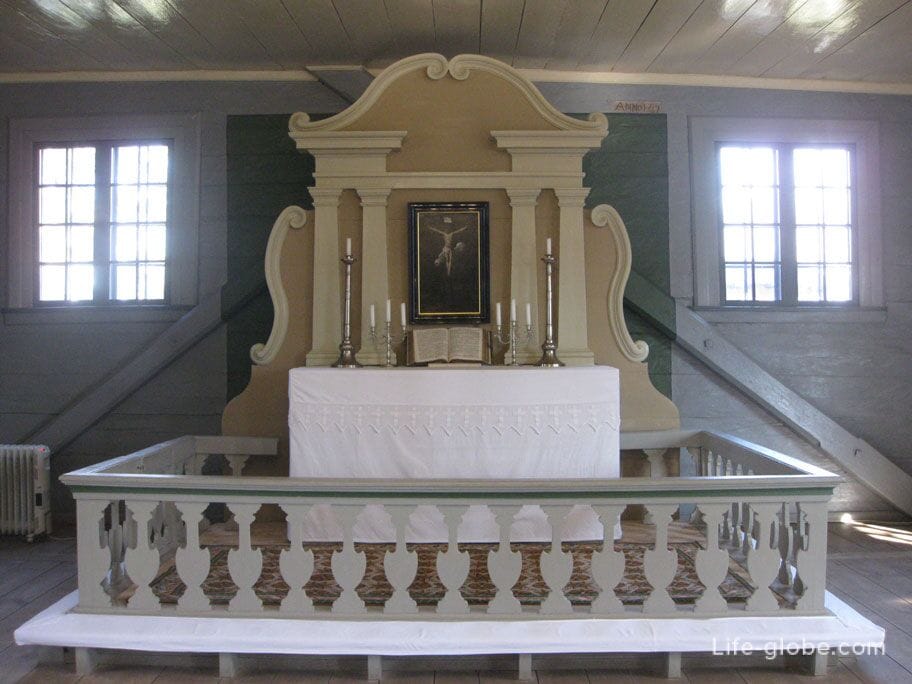
All the decoration of the Church, besides the altar of the Church are several paintings, candlesticks, commemorative plate, number plate, ecclesiastical Department, Church pews, purse and bowl for donations. All these and other interior design objects accumulated and treasured since the beginning of the existence of the temple. Every item has its specific place and use in Church rituals.
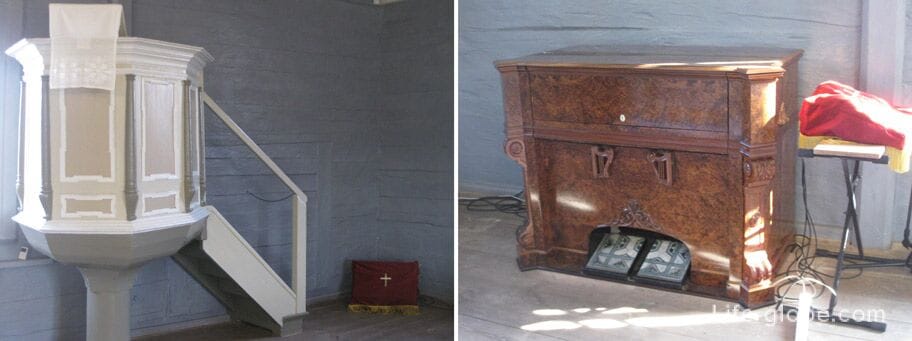
In the Church, on display under glass assembled a clever collection of historic Bibles, books, Scriptures, photos, and other details of the former interior.
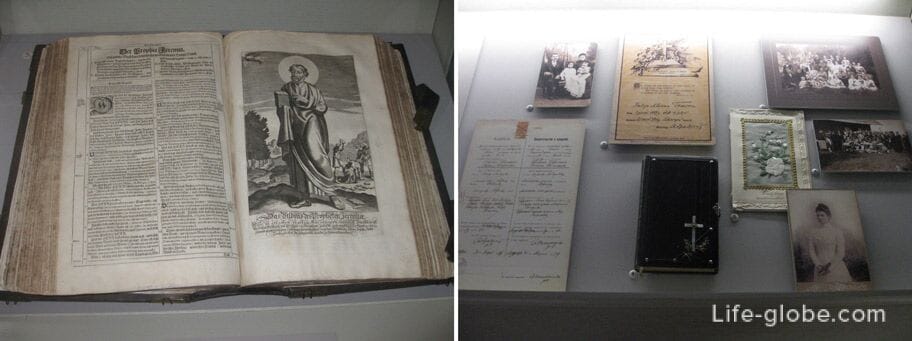
After exploring the Church we went directly to the stone Turaida castle (Turaidas pils). To the present day in part of the castle survived the complex consisting of the ruins of the observation tower, parts of the walls of the castle, courtyard and several dilapidated towers. Turaida castle was built in 1214 on the orders of Bishop albert of Riga and is known in the middle ages as Treiden castle/Schloss Treiden. Currently, the original from the castle there are only a few foundations, everything else re-created from 1953 to 2000.
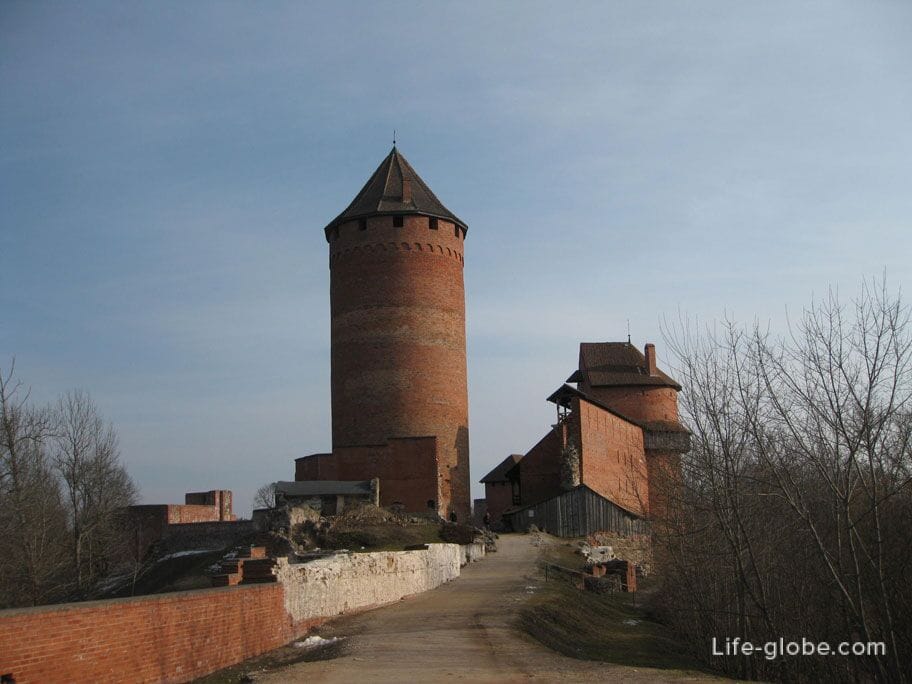
In the Turaida castle complex you can see the exposure in both outdoor in the inner rooms of the castle. Under the open sky are the North tower, North and South of forburg, the courtyard of the castle, the Foundation of the building, a well, part of the fortress walls and by-pass trail Turaida castle.
Courtyard Turaida castle
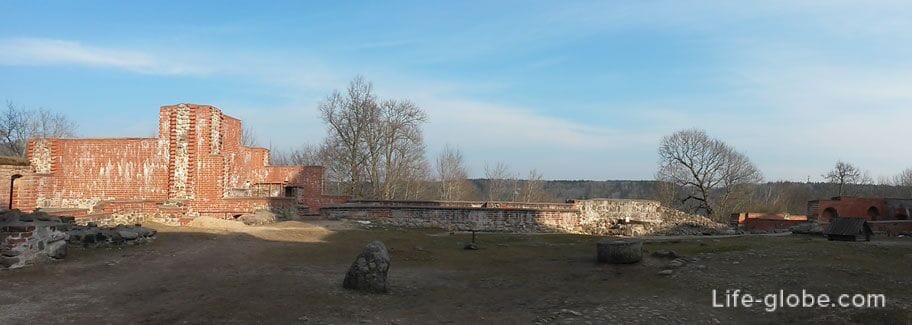
Towering southern building and a well in the courtyard of Turaida castle
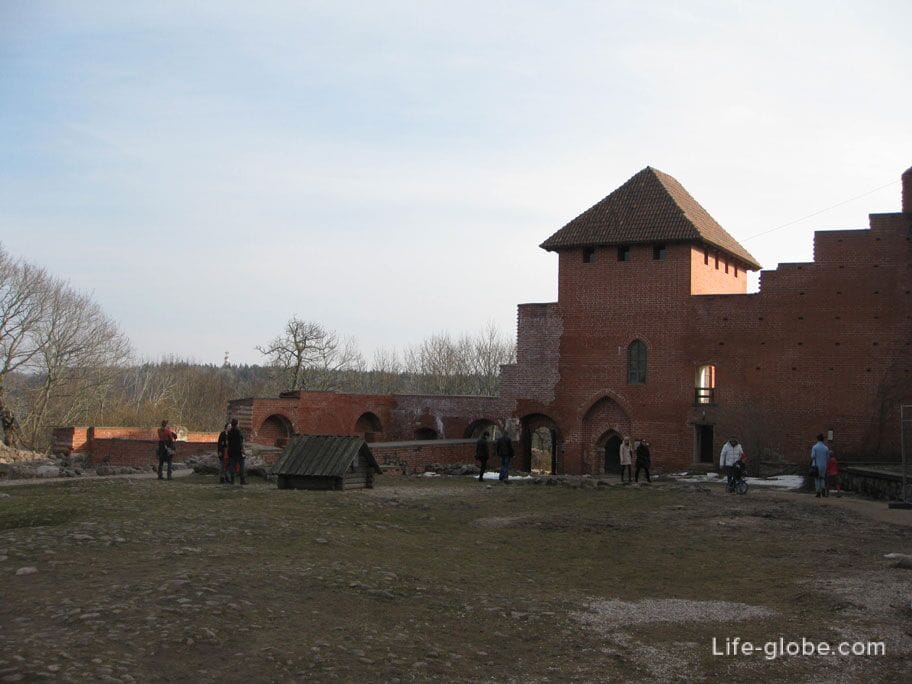
Western building and the large semicircular tower of the Turaida castle complex
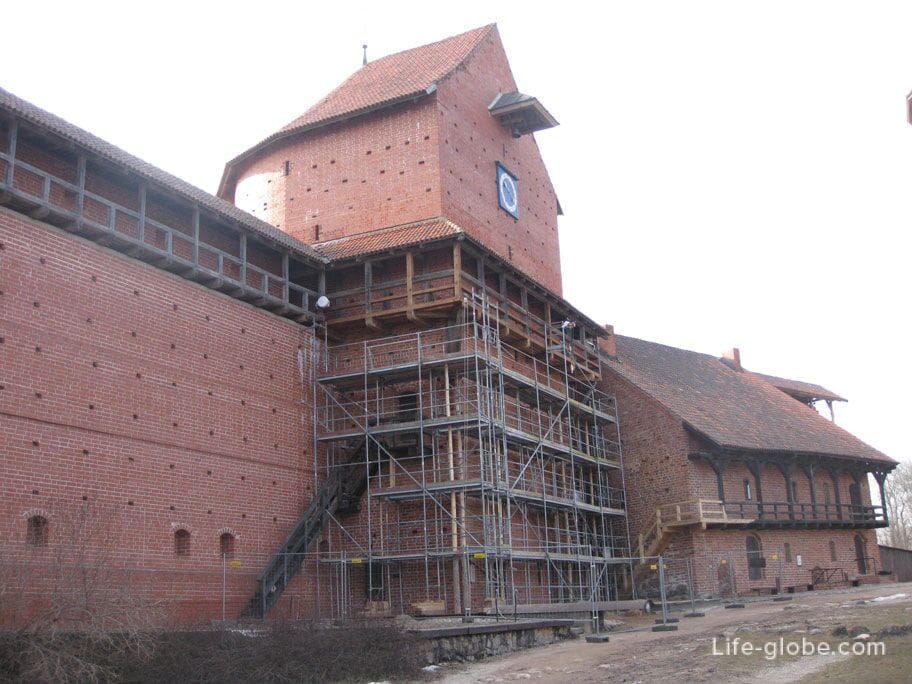
Remains of fortress walls and foundations of buildings
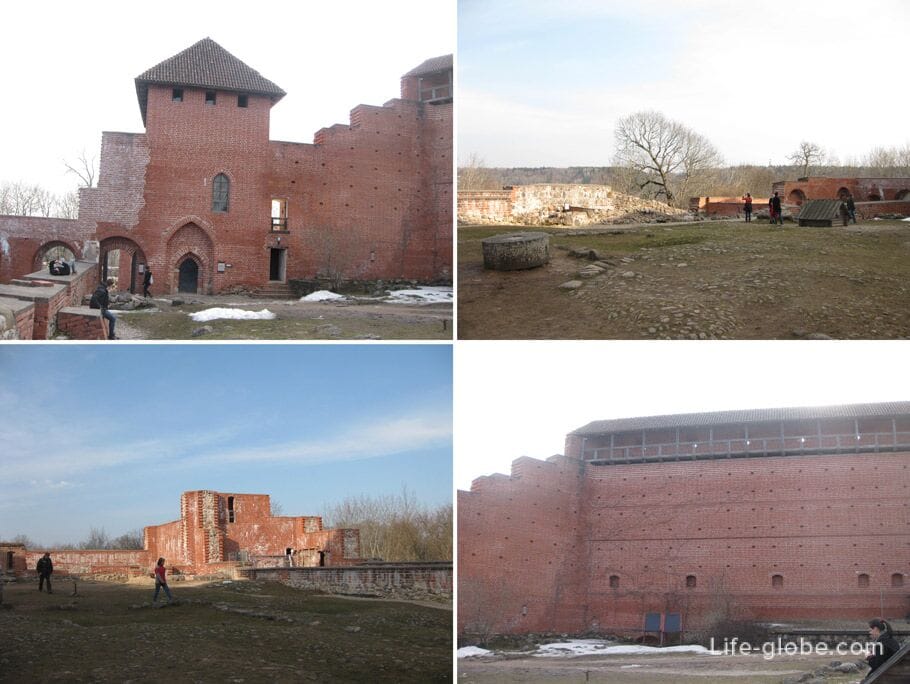
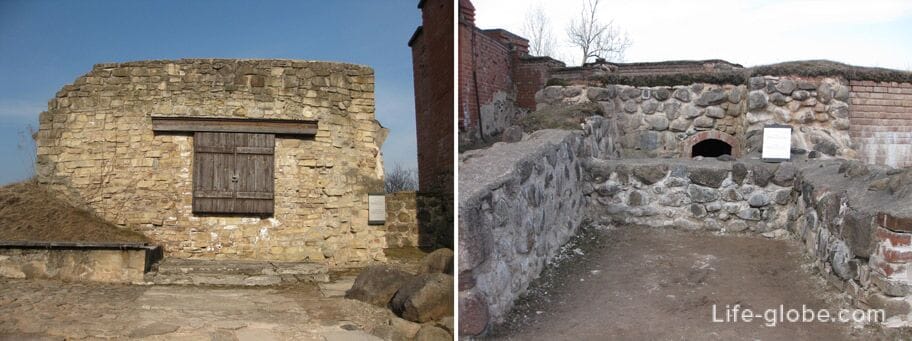
The far, back wall of the castle and a workaround
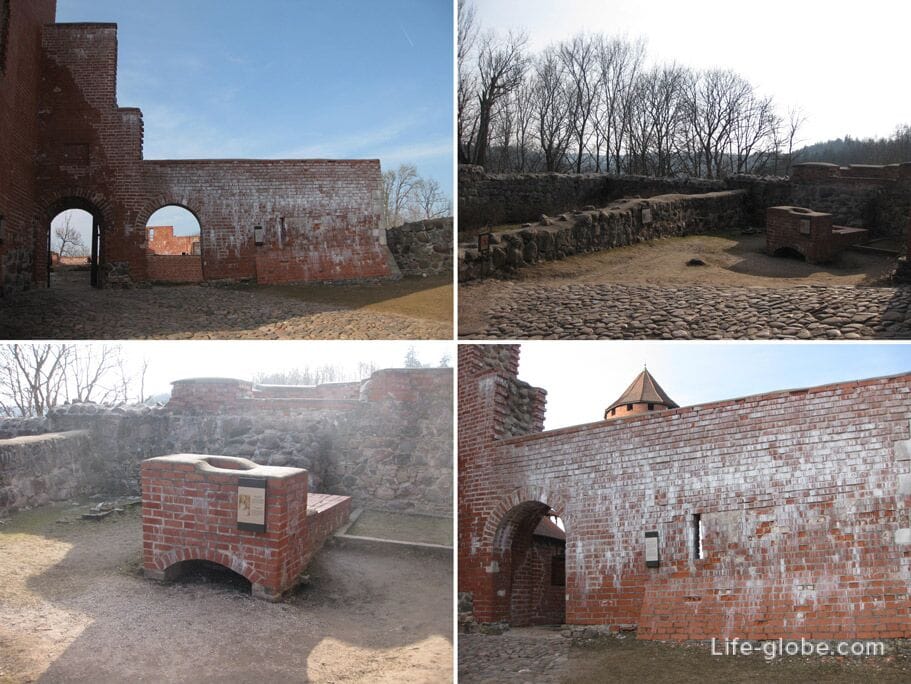
In the Main tower and the West building are the Museum. In the Main tower you can climb on the tower observation deck is located on each side of which offers an amazing view of the reserve, Park of Gauja river. Moving from window to window of the observation tower, eyes appear mind-boggling panoramas, one more beautiful than the other. These types of fascinating.
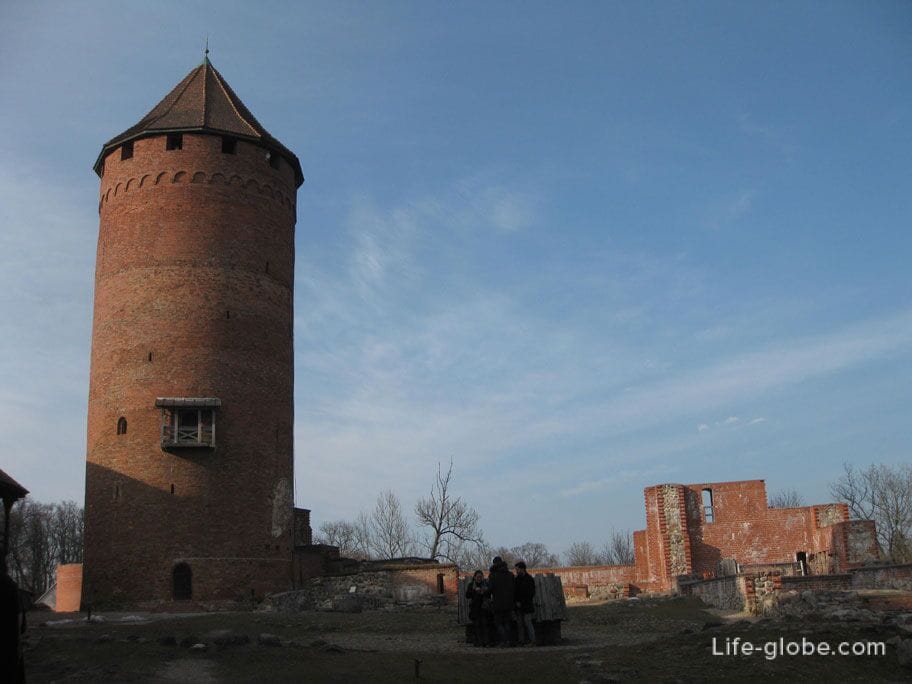
The ascent to the observation deck of the Main tower. The interior
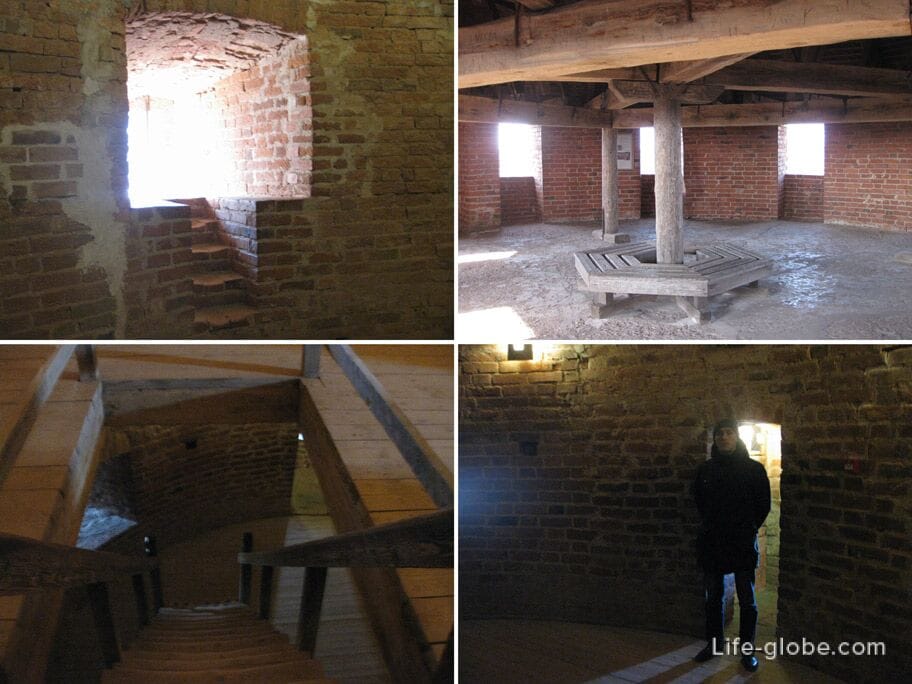
Panorama of the Gauja National Park from the observation deck of the Main tower
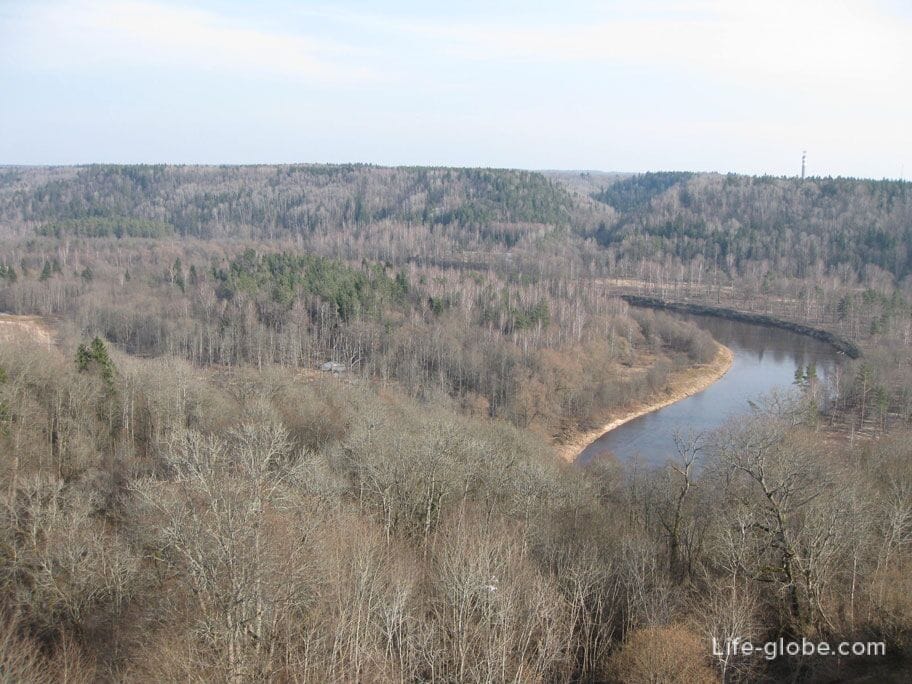
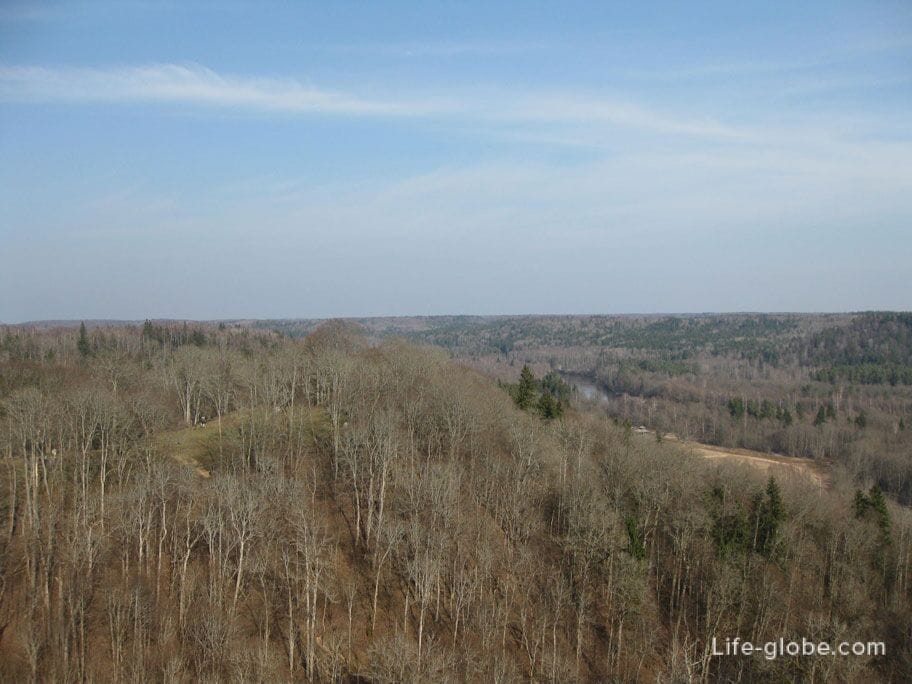
Panorama of the Turaida Museum reserve from the observation deck of the Main tower
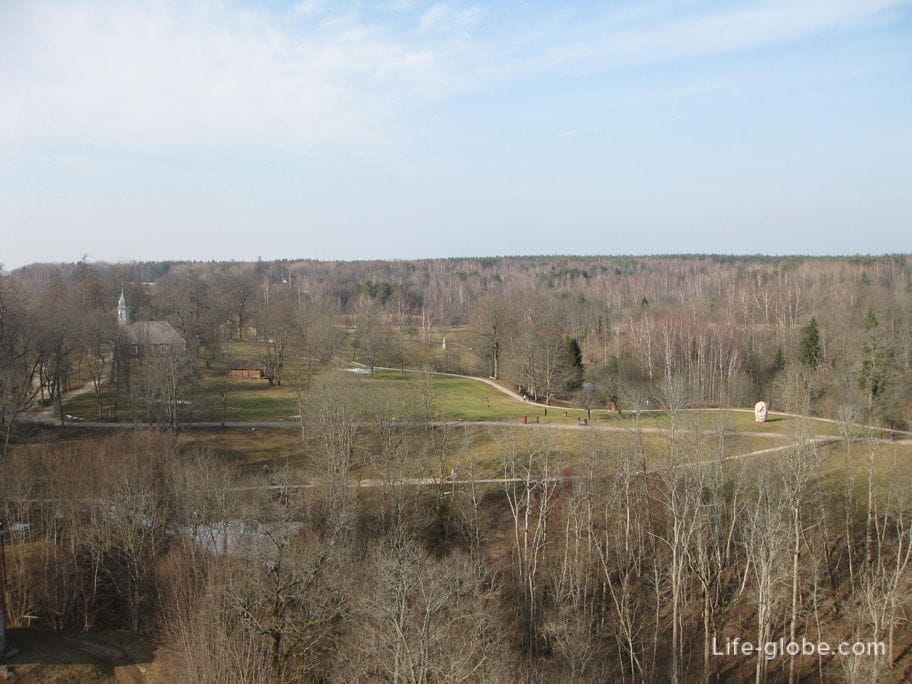
The tower is perfectly visible and the whole complex of Turaida castle. Here at the top of the Main tower mounted binoculars, which you can view on the Park and reserve by paying 50 Cents for 3 minutes.
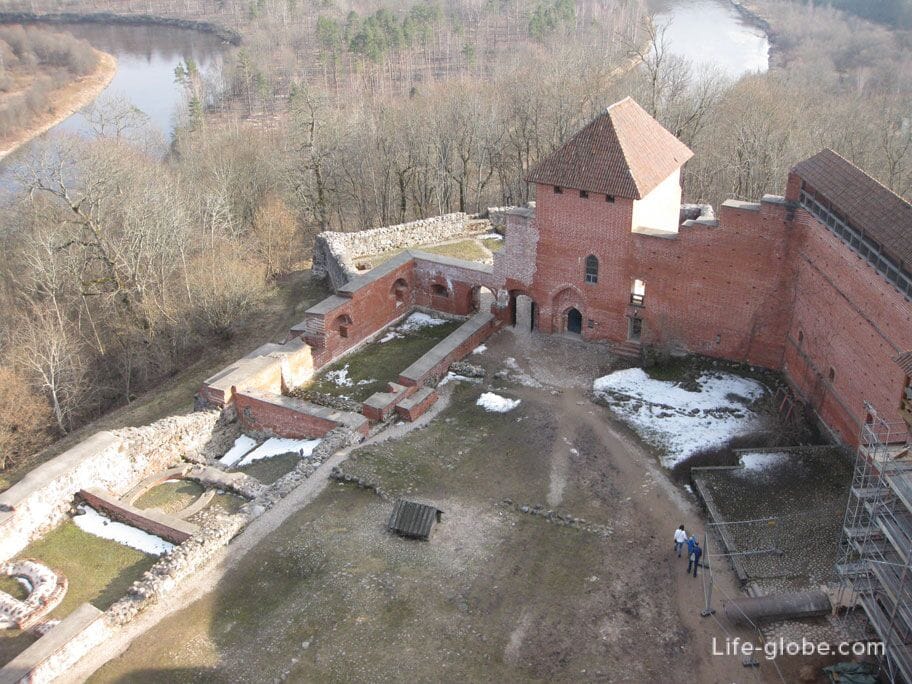
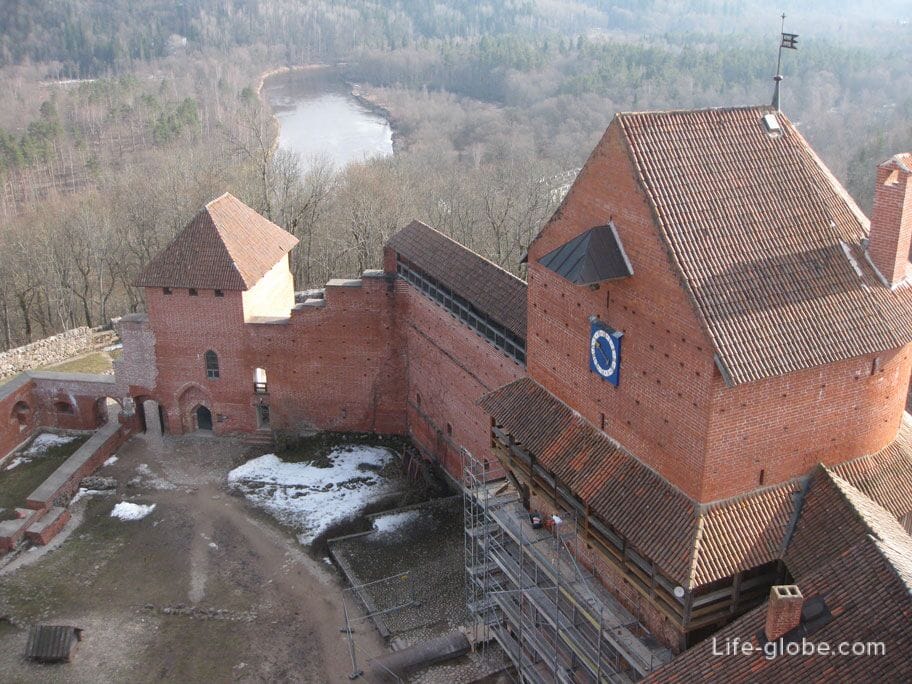
Another exposition is located in the room of the Western wing of Turaida castle. Here, on several floors, collections from throughout the history of the castle - paintings, scrolls and manuscripts, household items and interior, crossbows, swords, arrowheads, armor, chain mail, and fragments of old guns, and apparel of the soldiers. There are also exhibition samples recreates the lifestyle of centuries past. Yes it is, just describe it, it's easier to see.
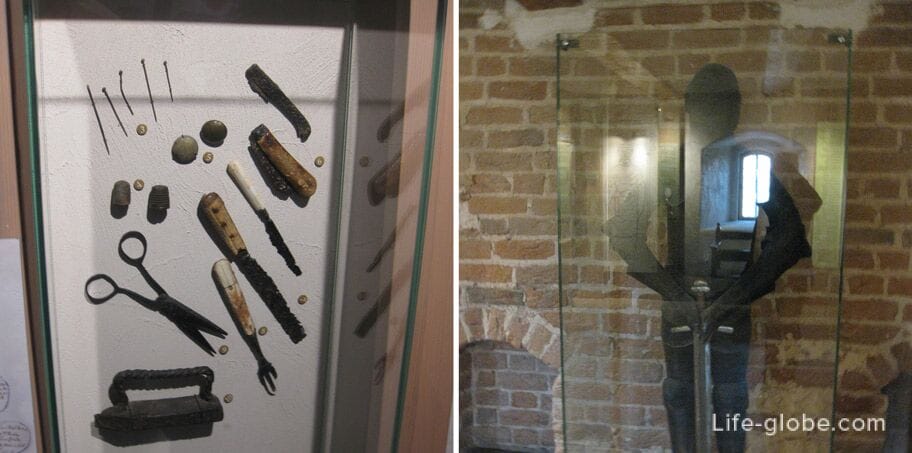
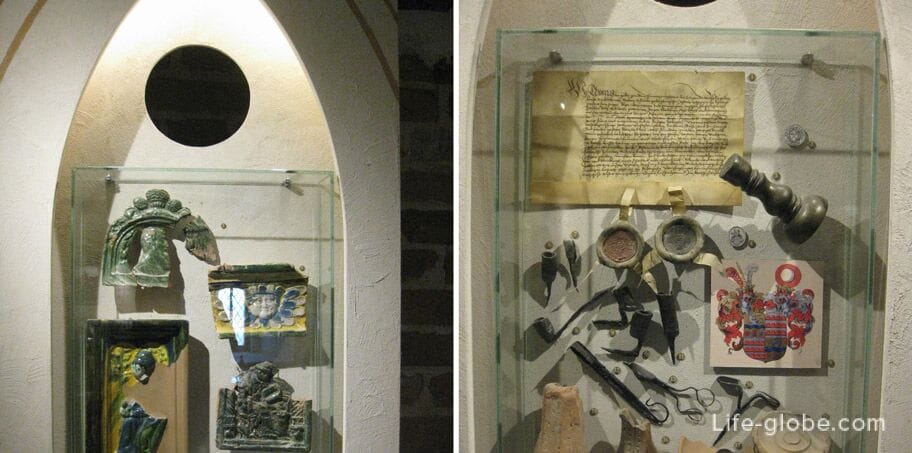
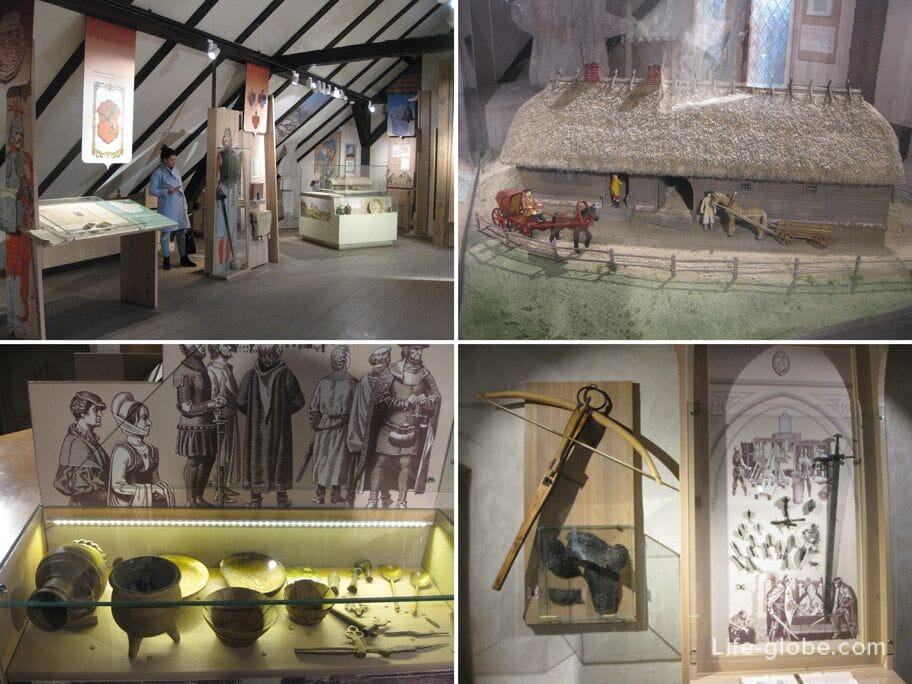
The clock has already started sixth, Convention centers Turaida castle close and we go for a walk around the Museum.
White house not far from Turaida stone castle
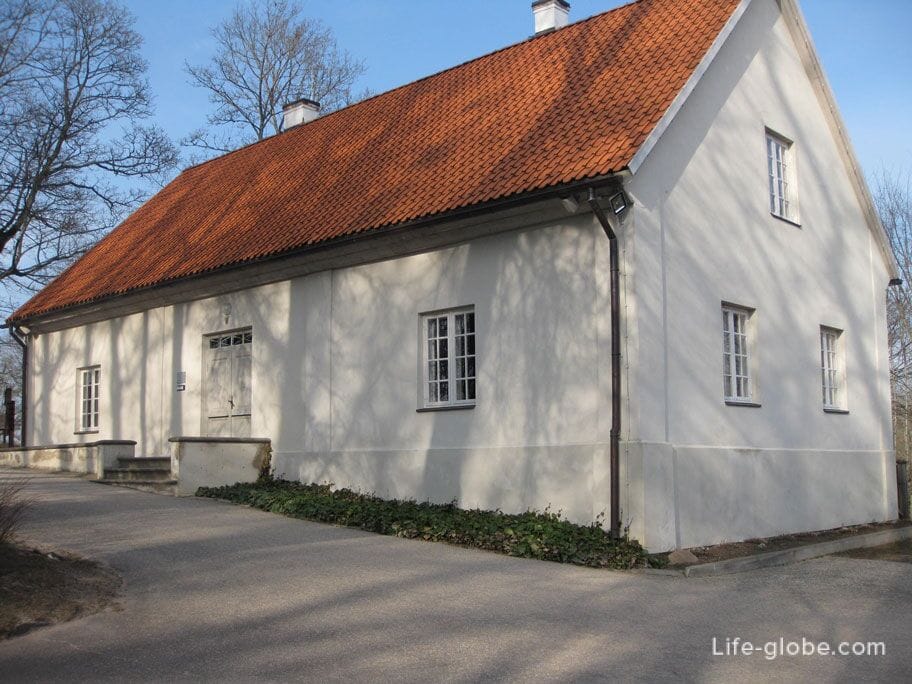
Here are a couple, the man carrying the backpack dog, she seems very tired, and with dogs allowed
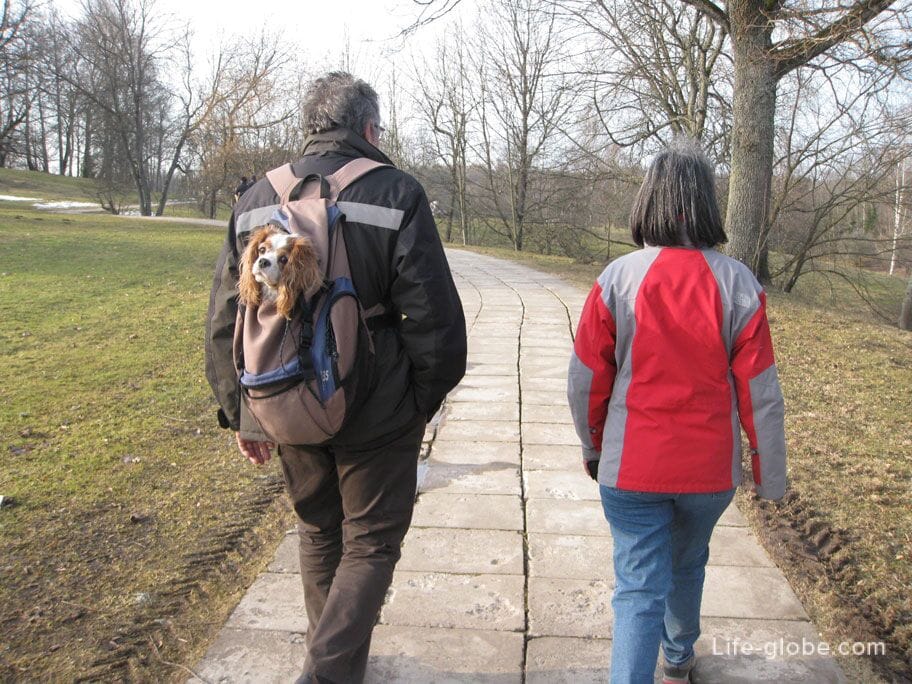
Go to the Park of folk songs. The Park is so named because it hosts an international folklore festival. Park songs includes a hill of dainas and sad songs. In the garden of songs features benches for relaxing extend footpaths tiled throughout here and there placed a stone sculpture, blends harmoniously into the environment.
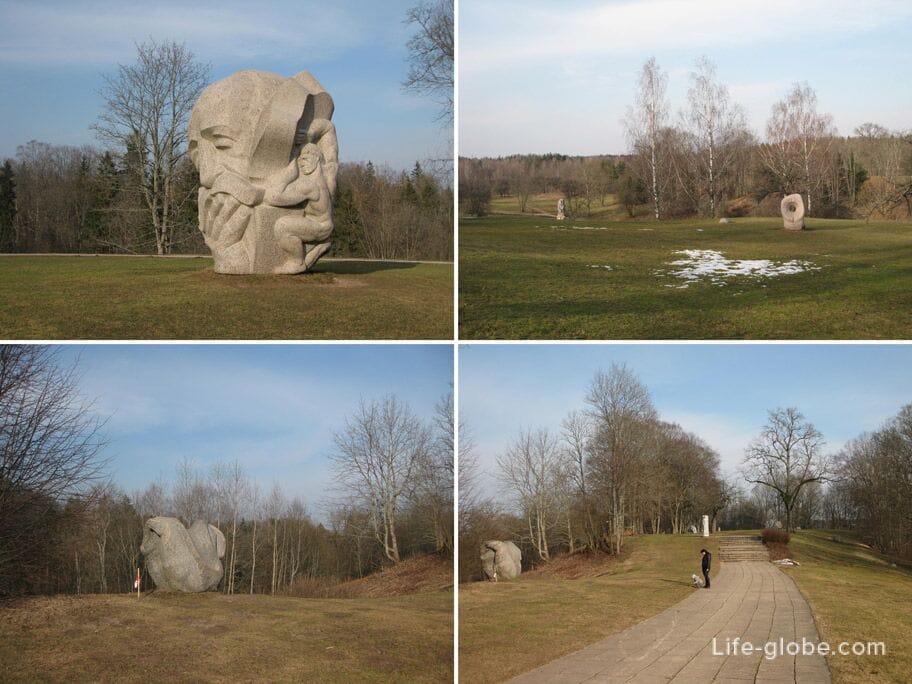
Then, coming back to the main entrance to the Turaida reserve, go to Turaida manor. Turaida estate from 1571 until the agrarian reform of 1920, was a private estate. Currently, the estate recreated the economic centre of the estate. It clearly shows how once lived and led his farm Housekee Livs.
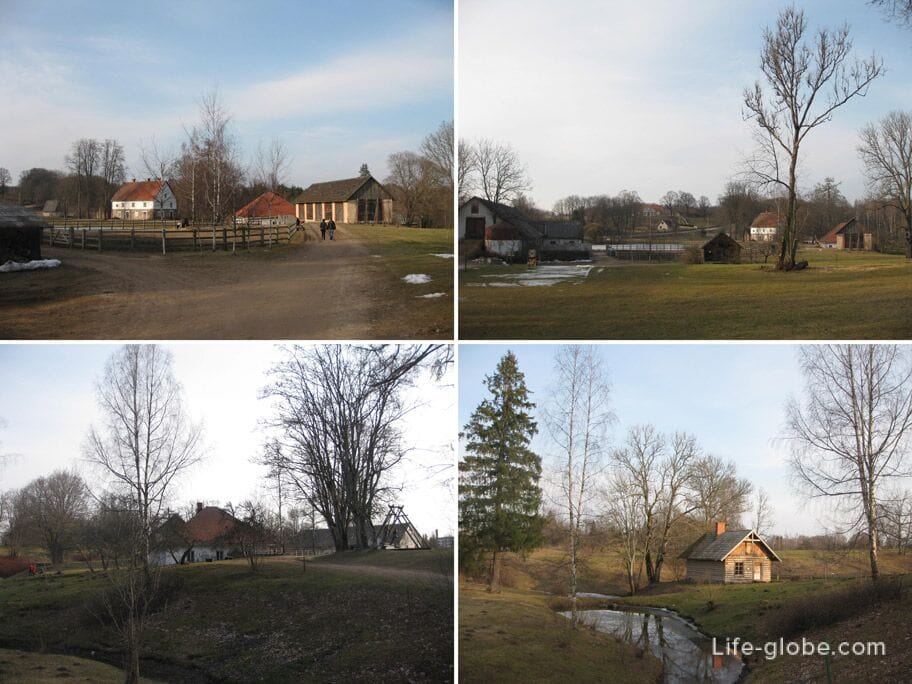
Walking around the estate you can see various small structure, which recreated the old and new homes Manager, sauna, smithy, dwelling house of the manor servants, the chief's house, katernik, kennels, barns, cellars and other outbuildings.
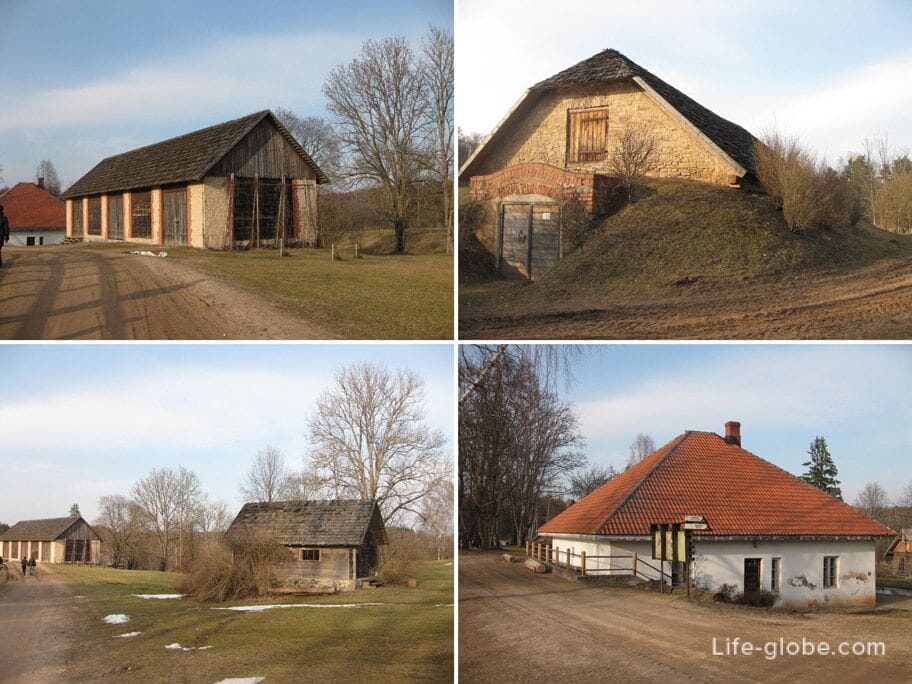
In the paddock at the stables walking horses
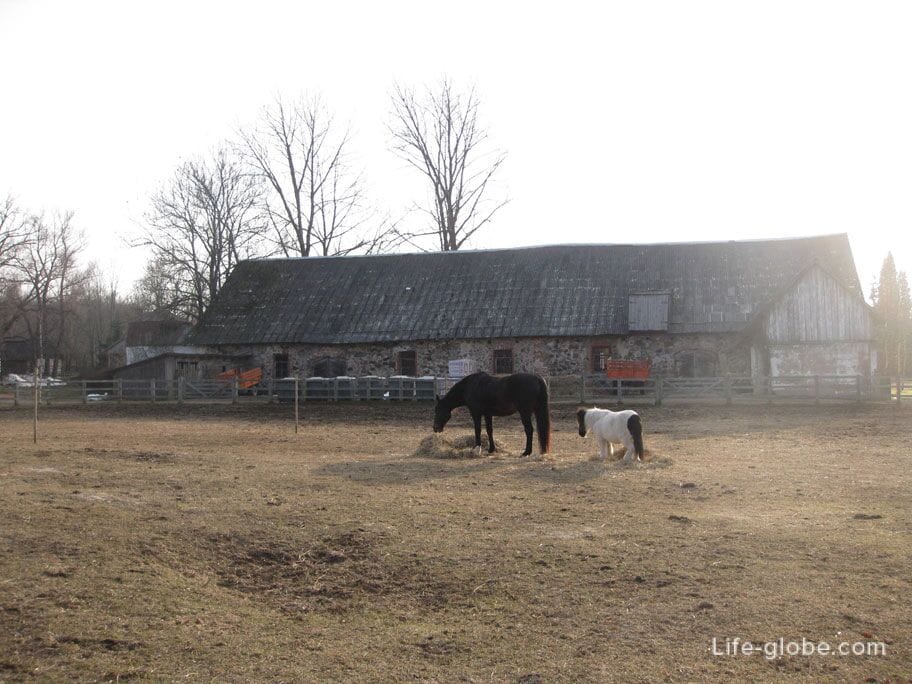
Numerous small ponds are home to fish and ducks swim
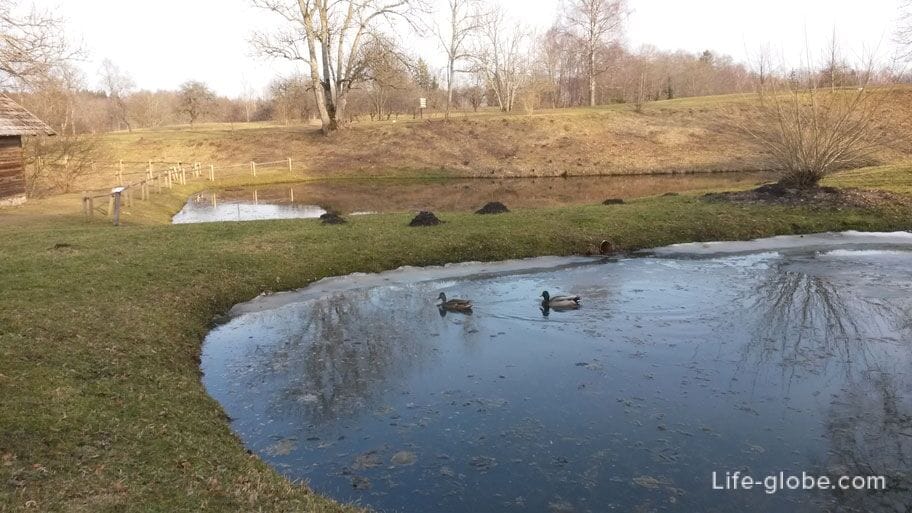
Here you can swing on a giant wooden swing, or sit down to rest on the bench enjoying the spectacular scenery
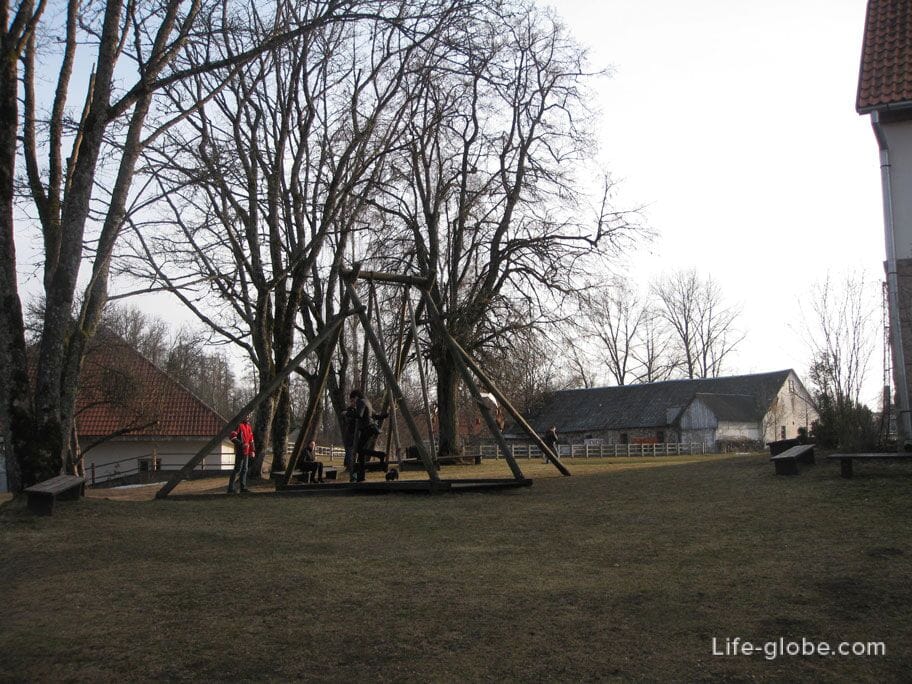
After visiting Turaida Museum reserve you can go back to Sigulda along the same route on foot, but to go five miles back not ice. Or hop on bus stop is across the road, opposite the main entrance to the Museum-reserve and 0.65 euros for the ticket to reach the station square of Sigulda. That's exactly what we did.
That's why, if you want to walk through the Gauja National Park, look into the Gutmana cave and visit Turaida Museum reserve, we are not advised to buy the cable car tickets at once there and back. If you plan to go back on foot, too, but then, of course, buy tickets directly at both ends will be economically profitable. By the way you can do differently, starting its route from Turaida Museum reserve, this from station square of Sigulda to take the bus and drive to the reserve and then walk back.
A day spent in Sigulda and its surroundings, we had almost everything planned and returned to Riga already dark. On how to get from Riga to Sigulda and back read here. And we walked only one of the possible walking routes Gauja National Park. Detailed map with this route, as well as other possible Hiking routes with rock formations, caves, cliffs and heavenly mountain, see and read here.
Helpful information:
Address cable car in Sigulda: Sigulda, St. Bail, 14.
Official site of the cable car in Sigulda: www.bungee.lv.
Hours of operation and the cost of the cable car in Sigulda. Recalls that opening hours and the cost can always change, check before travelling.
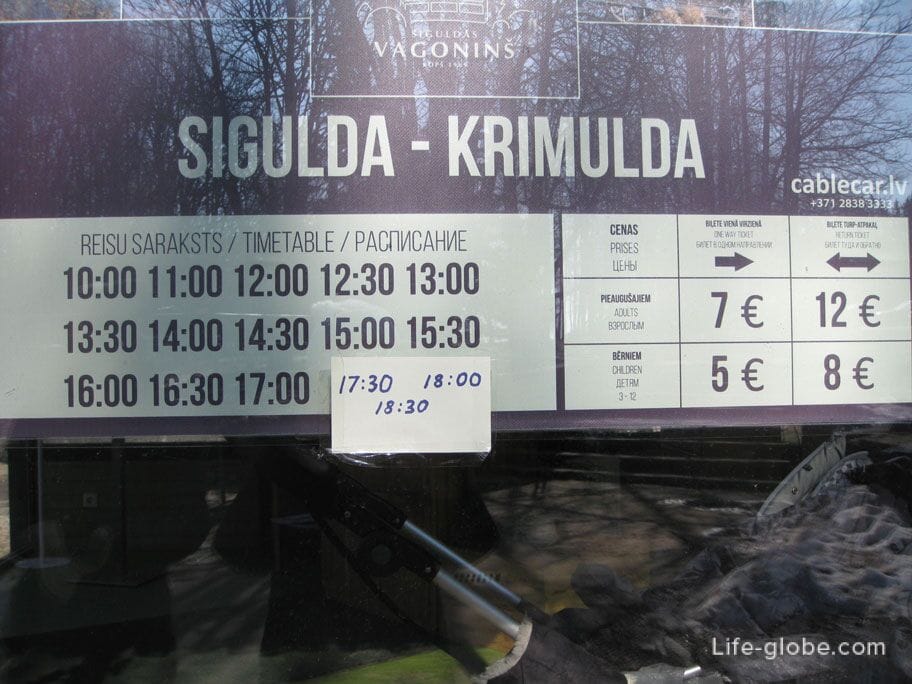
In Turaida Museum reserve hosts a variety of educational programs, festivals and tours in various languages, celebrated holidays. In the reserve you can hold a wedding or celebrate a wedding anniversary.
While working Turaida Museum reserve:
In the winter season: from 01.11 31.03 from 10:00 to 17:00
from 01.04-30.04 from 10:00 to 19:00
In the summer season: from 01.05 till 30.09 - from 09:00 to 20:00
from 01.10-31.10 - 09:00 to 19:00
Address Musa Turaida reserve: Sigulda, Turaidas street, 10, Sigulda region, LV - 2150.
Official site of Turaida Museum reserve: www.turaida-muzejs.lv
If from Sigulda to Turaida Museum reserve is to go by car, then you will meet the only in the Baltic States road-serpentine. Serpentine road was built in 1862, when the preparations for the visit of the Russian Tsar Alexander II, was built the first wooden bridge across the Gauja river. Coordinates GPS: 57.1699, 24.8305
Map of Turaida Museum reserve with all the attractions and route

A map of the complex Turaida castle
